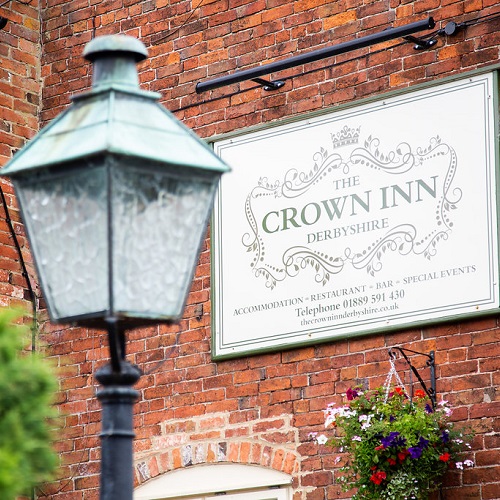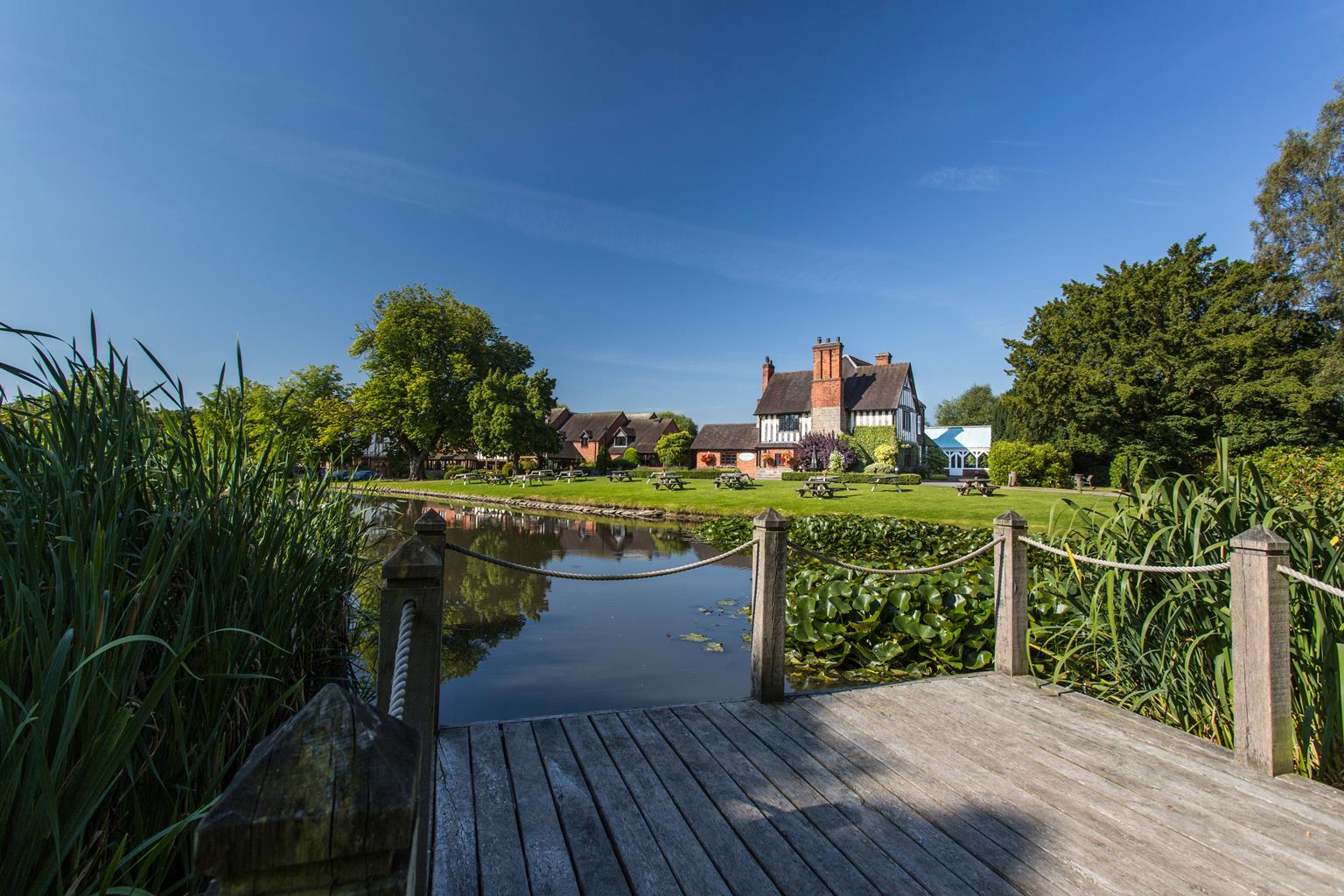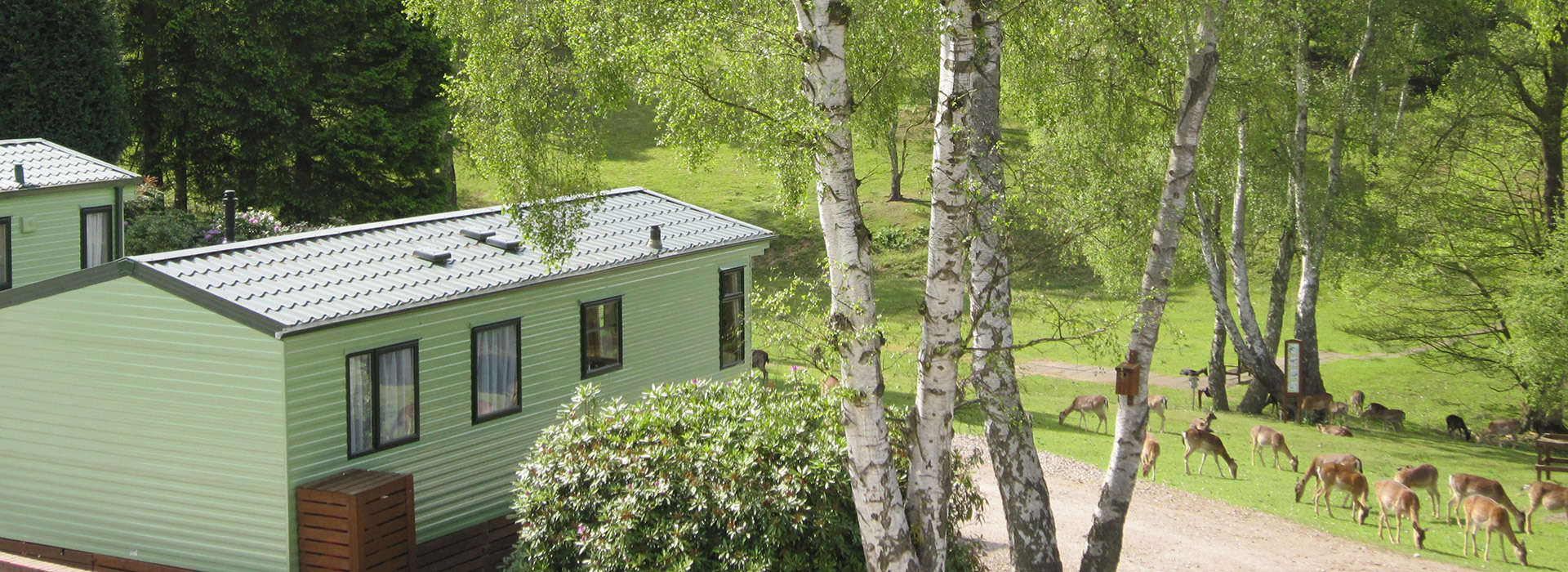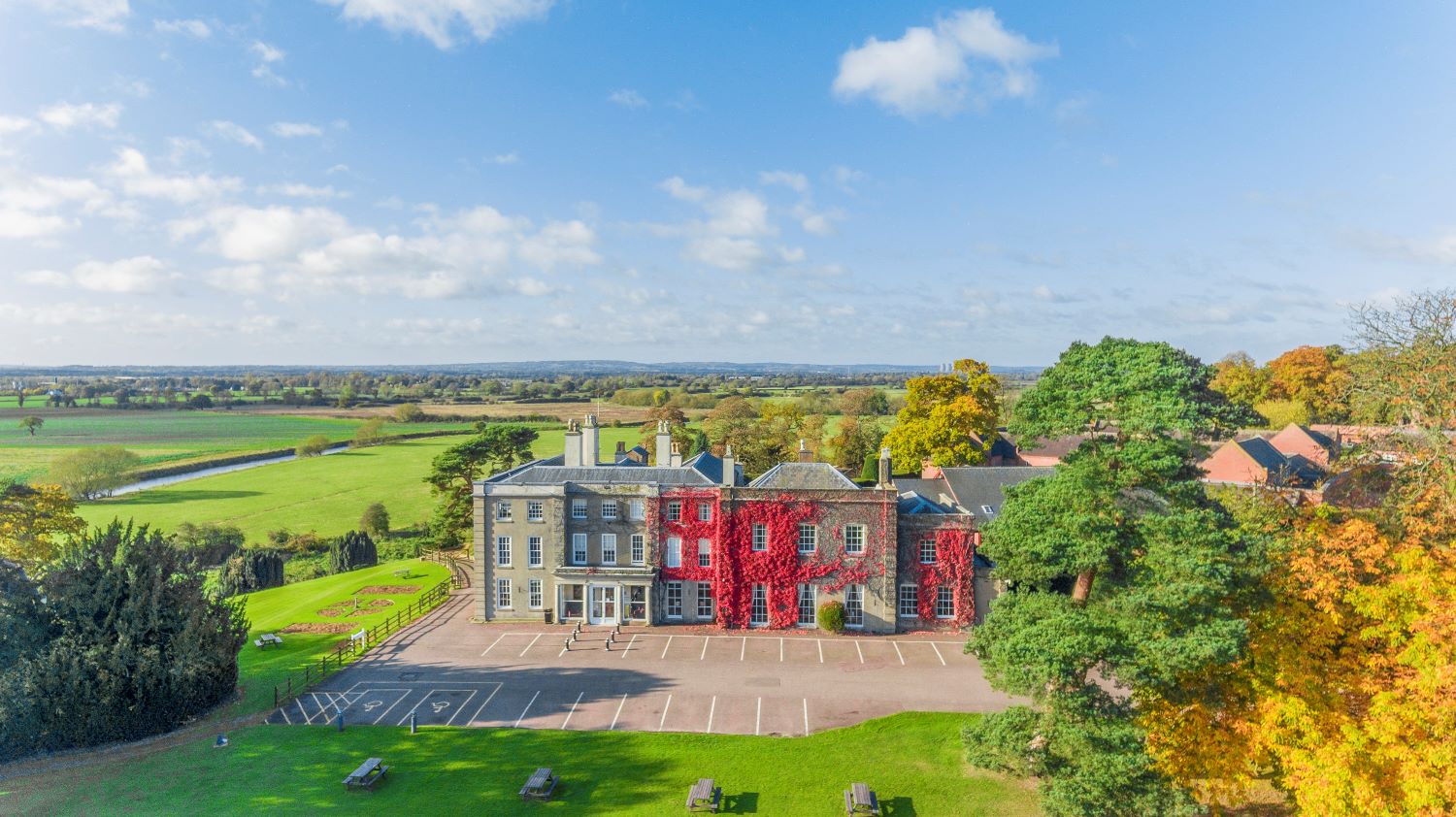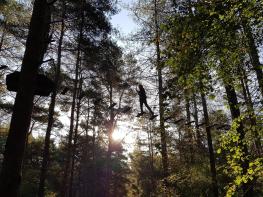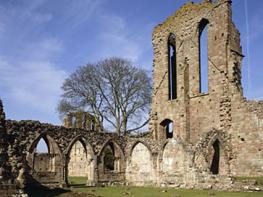This well-established hotel has gained a reputation for its comprehensive spa offering. The…
Abbots Bromley

A colourful and ancient tradition is alive and well in one of the county’s most charming villages.
5.25 miles (8.4kms)
About the walk
The existence of Abbots Bromley can be traced back to long before the Norman Conquest of England in 1066, through a number of references in charters and wills dating from that time. The first market charter was granted in 1221 for a weekly market and an annual two-day fair to be held in the village, and this fair survives today in the form of a rare and slightly unusual ritual. One theory on the obscure origins of the famous Horn Dance is that it derived from an ancient fertility rite, another is that the dance celebrates the establishment of ancient hunting rites.
An old tradition
The Horn Dance was first performed at the Barthelmy Fair as long ago as 1226. This was originally held on the feast day of St Bartholomew, one of the Apostles and the patron saint of tanners, but an alteration to the Gregorian calendar in 1752 changed this date to 4 September. Today it's held on the first weekend after the 4th, with the dance proper taking place on the Monday.
Dancing on the village green
According to custom, six pairs of ancient reindeer horns (or more accurately antlers) are collected from St Nicholas's Church just before 8am by a small entourage of dancers comprising – among others – a fool, a hobby horse, a bowman and Maid Marion. The first dance of the day is performed on the village green with music provided by a melodion (a small reed organ similar to an accordion). Then a tour of the nearby villages, farms and pubs ensues with the final dance taking place back at the village green. In addition to the Horn Dance proper, this colourful procession also features displays of morris and clog dancing. Other attractions include exhibitions and craft stalls, plus the pleasures of no fewer than five pubs in Abbots Bromley alone. Each year the dance attracts hundreds of visitors from all over the world.
Abbots Bromley is also linked to a number of notable legends. The Goats Head pub was once patronised by infamous highwayman Dick Turpin, who is believed to have stayed the night there after stealing a horse from Rugeley Fair. And then there is the story of the Bagot goats: these black-necked beasts used to roam Bagot Woods to the north of the village and were first given to Sir John Bagot by Richard II at the end of the 14th century, in return for the hunting he enjoyed here. Legend has it that as long as the herd is maintained the Bagot family shall survive.
Walk directions
From the wooden Buttercross, by The Goats Head, cross the road and go up Schoolhouse Lane. At the top of the hill turn right along Swan Lane, and when you get to the end head right along a path to a gate. Head diagonally left across the field to a gap in the hedge. Go through this gap and continue across the next field to a footbridge. After the footbridge keep following the faint grassy trail to a stile near the top right-hand corner of the field.
Bear slightly left across the middle of the field to another stile. Carry on straight up the next field, keeping a hedge just to your left, across a series of stiles and fields, until you get to a road. Head straight across the road, following a footpath sign and, just as the track heads hard right, go straight on over a concrete stile and across the next field.
After another stile, follow the curve of a field to the right as far as a metalled road. Go left here, following the road and track as far as Parkside farm gate. Just before this gate, go through a gate on the right, and then left through another series of gates.
Continue across the field, with a hedge to your left, before crossing a funnel-shaped section of meadow to the small wood on the far side. Follow the path diagonally right through this band of trees to a pair of footbridges and another stile. Leaving the wood behind, head for the far right-hand corner of the field.
At the road opposite Park Lodge turn left. Just after crossing Story Brook head left. At the far left-hand corner of the field, follow the hedge round to the right and cross a small copse. Continue to follow the fence towards the corner of Bagot Forest and then go left, through the hedge. With the hedge now on your right, walk around the edge of the field, swinging left, to go through another clear gap in the hedge.
With Bagot Forest to your right, follow the Staffordshire Way footpath signs across the wide field ahead, aiming for the bottom end of a sloping hedge. When you reach it turn left and follow its right side up to a gate at the top of the field. Carry on straight along the track as far as a metalled road. Go straight on to get back to the start.
Additional information
Roads, grass trails and gravel tracks, many stiles
Farmland and village
Keep on lead at all times
OS Explorer 244 Cannock Chase
Car park on Schoolhouse Lane, Abbots Bromley
None on route
WALKING IN SAFETY
Read our tips to look after yourself and the environment when following this walk.
Find out more
Also in the area
About the area
Discover Staffordshire
It was Staffordshire that bore the brunt of the largest non-nuclear explosion of World War II, when a munitions dump at RAF Fauld went up in 1944. It was also the county’s regiment that once boasted within its ranks the most decorated NCO of World War I, in the person of William Coltman (1891-1974). Going back a little further, George Handel penned his world-famous masterpiece The Messiah on Staffordshire soil. During another chapter of Staffordshire history, the county was home to the first canals and the first factory in Britain, and it had front-row seats for the drama surrounding one of the most notorious murder trials of the 19th century, that of Doctor William Palmer.
In outline, Staffordshire looks not unlike the profile of a man giving Leicestershire a big kiss. The man’s forehead is arguably the best region for hillwalking, as it comprises a significant chunk of the Peak District. This area is characterised by lofty moors, deep dales and tremendous views of both. Further south are the six sprawling towns that make up Stoke-on-Trent, which historically have had such an impact on Staffordshire’s fortunes, not to mention its culture and countryside. This is pottery country, formerly at the forefront of the Industrial Revolution and the driving force behind a network of canals that still criss-cross the county.
Nearby stays
Restaurants and Pubs
Nearby experiences
Recommended things to do
Why choose Rated Trips?
Your trusted guide to rated places across the UK
The best coverage
Discover more than 15,000 professionally rated places to stay, eat and visit from across the UK and Ireland.
Quality assured
Choose a place to stay safe in the knowledge that it has been expertly assessed by trained assessors.
Plan your next trip
Search by location or the type of place you're visiting to find your next ideal holiday experience.
Travel inspiration
Read our articles, city guides and recommended things to do for inspiration. We're here to help you explore the UK.




